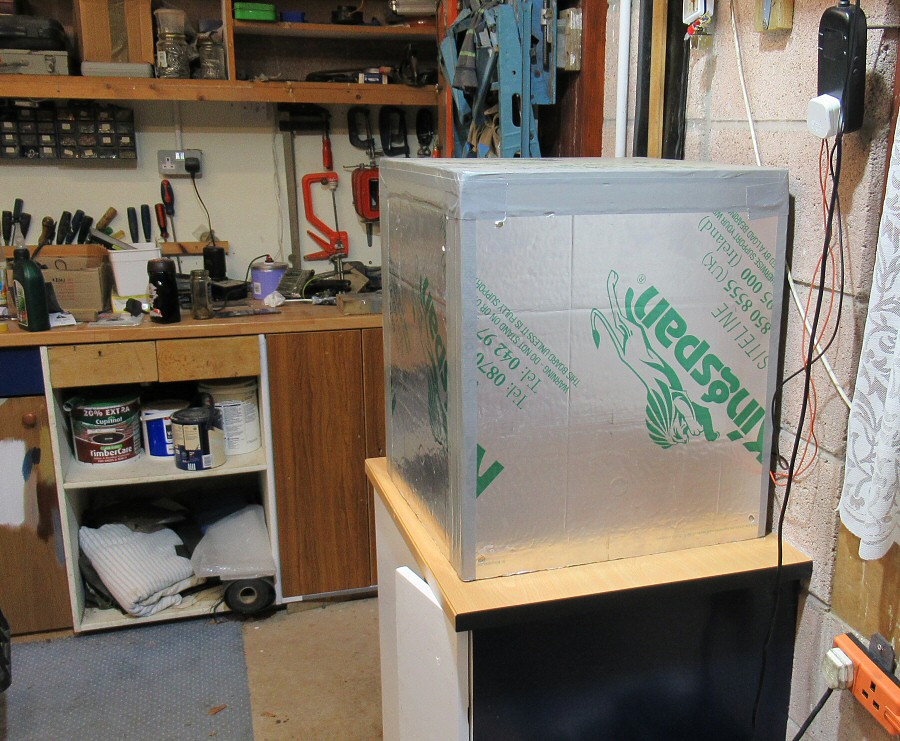Around 8 years ago my wife started a beer kit, and I took it over, which started me brewing home kits, I find Scottish Export suits my taste best, but home brew drops into two groups, the expensive kit which to be fair with two can kits makes a very good ale, and the cheap kits where you add loads of sugar. So we jump from around £12 to £20 between 1 can and 2 can kits.
So I have done one or two 2 can kits, but in the main idea was cheap beer, and so looking at around 30p per pint to 55p per pint and can buy Morrison Bitter at 52p per pint so as a money saving exercise not worth making 2 can kits, OK Morrison Bitter only 2% and in Wales the price has gone up, but I live close enough to boarder to pick it up in England.
So early days I was trying a different one on regular basis then Morrison's started doing a small range of kits at around £7.50 stopped doing it now, but the result was I started doing same kit again and again, but the flavour was not the same, so my question was why, even when two kits bought together the flavour was not the same when done one after the other.
So careful notes and realised it was the temperature, wife wanted me out of kitchen so moved to garage, which was really too cold so got the old fridge/freezer and a thermostat and started to brew with a very controlled temperature, cutting a long story short, I realised that it was all down to first two days, if it warms up or cools down latter it makes very little difference, but first two days are critical two reasons, one is your not boiling the water, it is out of the tap, so does not matter how clean to keep things, bugs can get in, so you want the alcohol fast as it kills the nasty bugs most of the time anyway. Second is if temperature too high it gets a very bitter after taste.
So in the main you want 19.5°C to 20.5°C for first 2 days, after that it can go to 24°C without a problem, but first two days is the important bit. I tried using the fridge turned off, but fermenting produces heat, so fridge too well insulated unless garage below 10°C. So used the freezer compartment and thermostatic control, now freezer has gone use just an old coat, and thermostatic controlled heat pad, and always start on a cool day.
I also changed my aims, to start with looking for 6% ABV then realised 4% tastes nicer, below 4% ABV not sure how well it will keep, but tend to either over fill the fermenter or go a little short on sugar, the more sugar used the higher the ABV and the more bitter the after taste is, so tend to make 45 pints not 40 pints and a little short on sugar.
I tried the fast kits you get in a box, just add water and the yeast, for beer not very good, however for cider they work very well and your drinking it within a week of making it, you can start drinking it after 3 days (it says 48 hours) the longer you wait the dryer it gets, so don't make it too long before you want to drink it.
I find pop bottles are best for bottling, one at 2 litres per bottle you only need 12 bottles, and so easy to fill them, have 14 ready in case it will not all fit, no messing around putting caps on, and you can feel pressure without opening so if you bottle too early you can release pressure.
For the syphon you need extra head to water as the depression in the pipe pulls out the CO² so you can lose syphon so fermenter on worktop and bottle on the floor, fill from bottom so two bits of pipe with a tap at least bottle hight from end, or the beer with froth up if the pipe does not go to bottom. When I started the pipe was too short.
I found when not using temperature control I had to use a hydrometer, but with temperature control could near enough guarantee fomenting finished after 3 week when last two weeks at 24°C.


